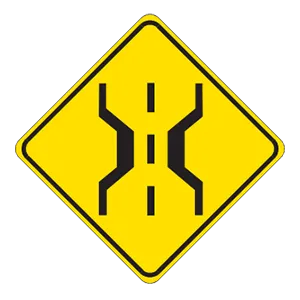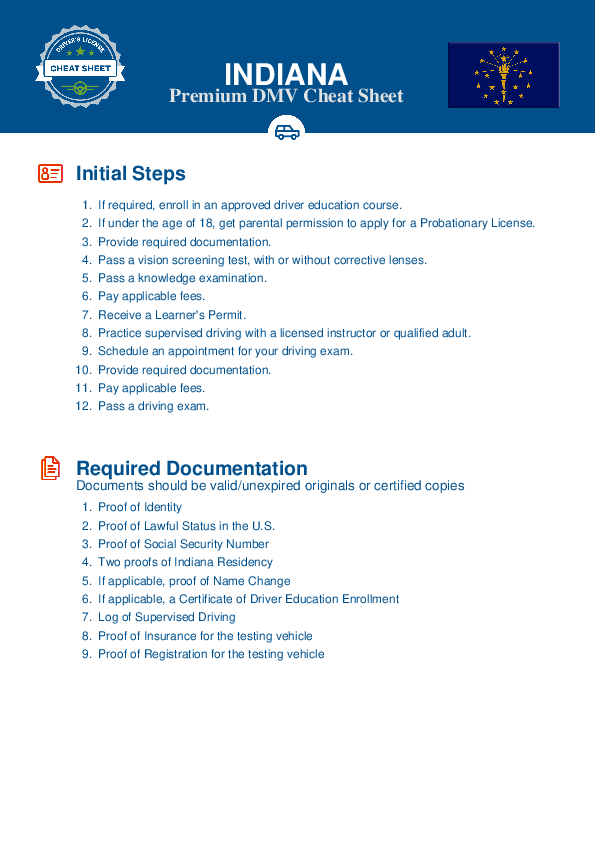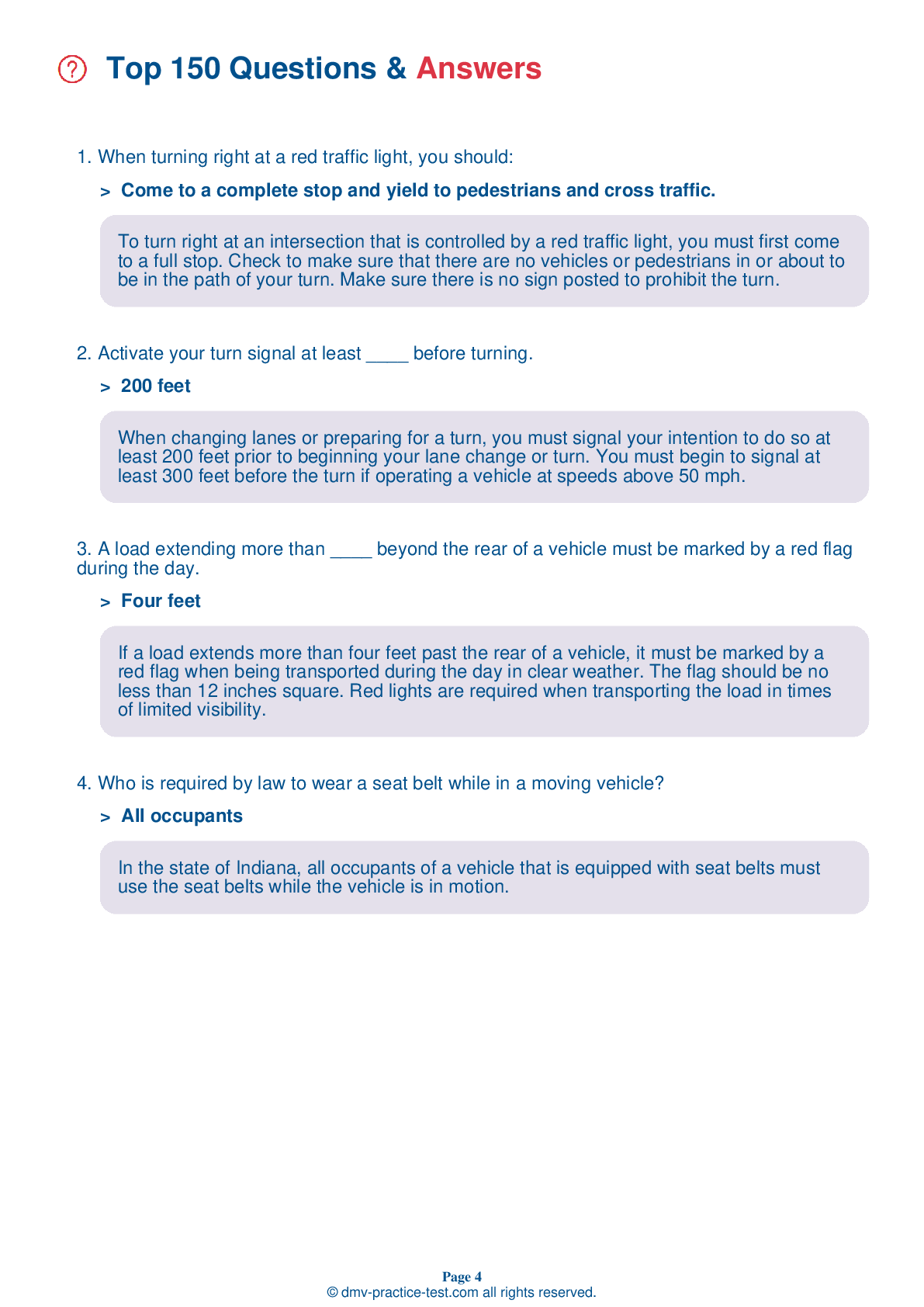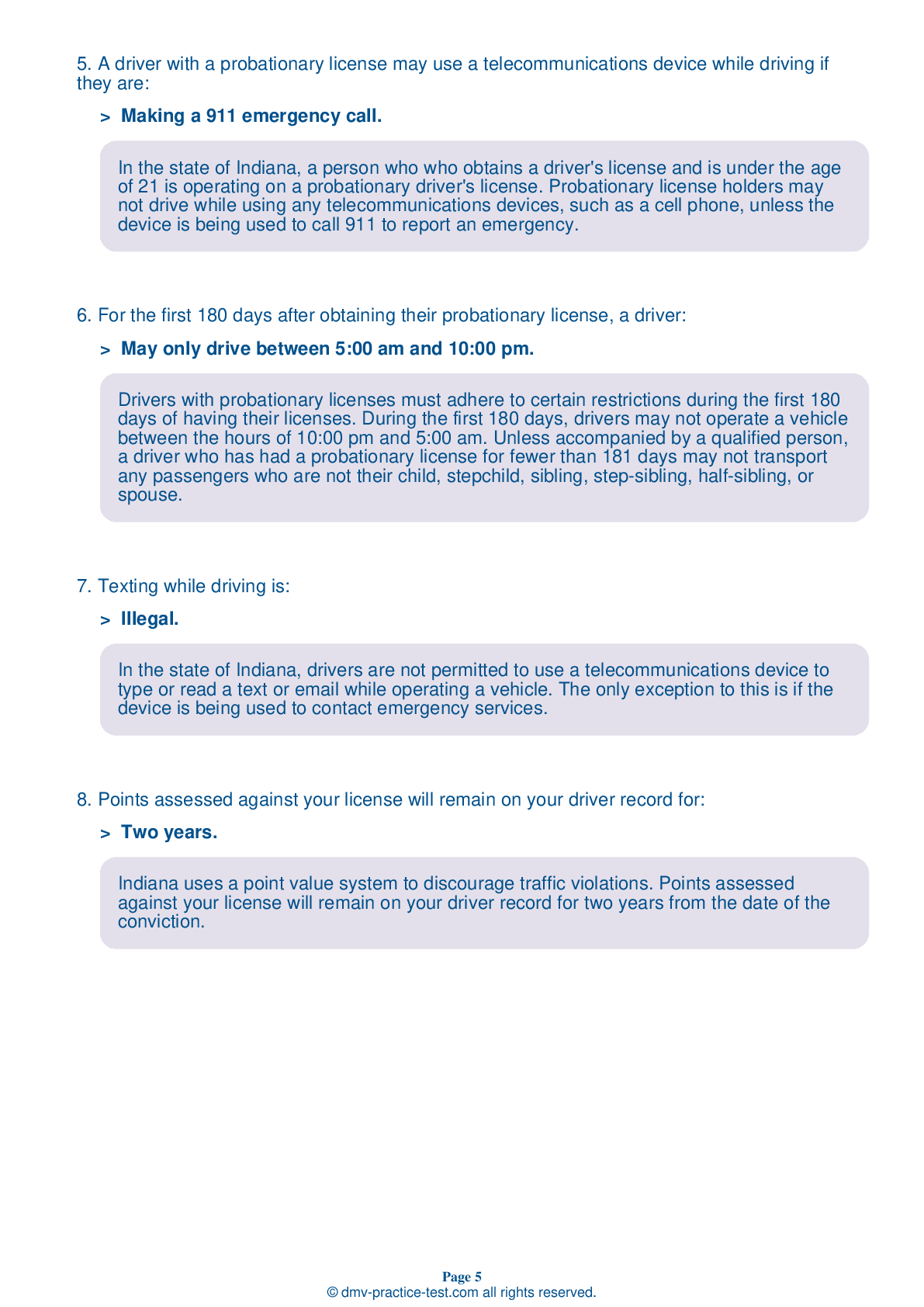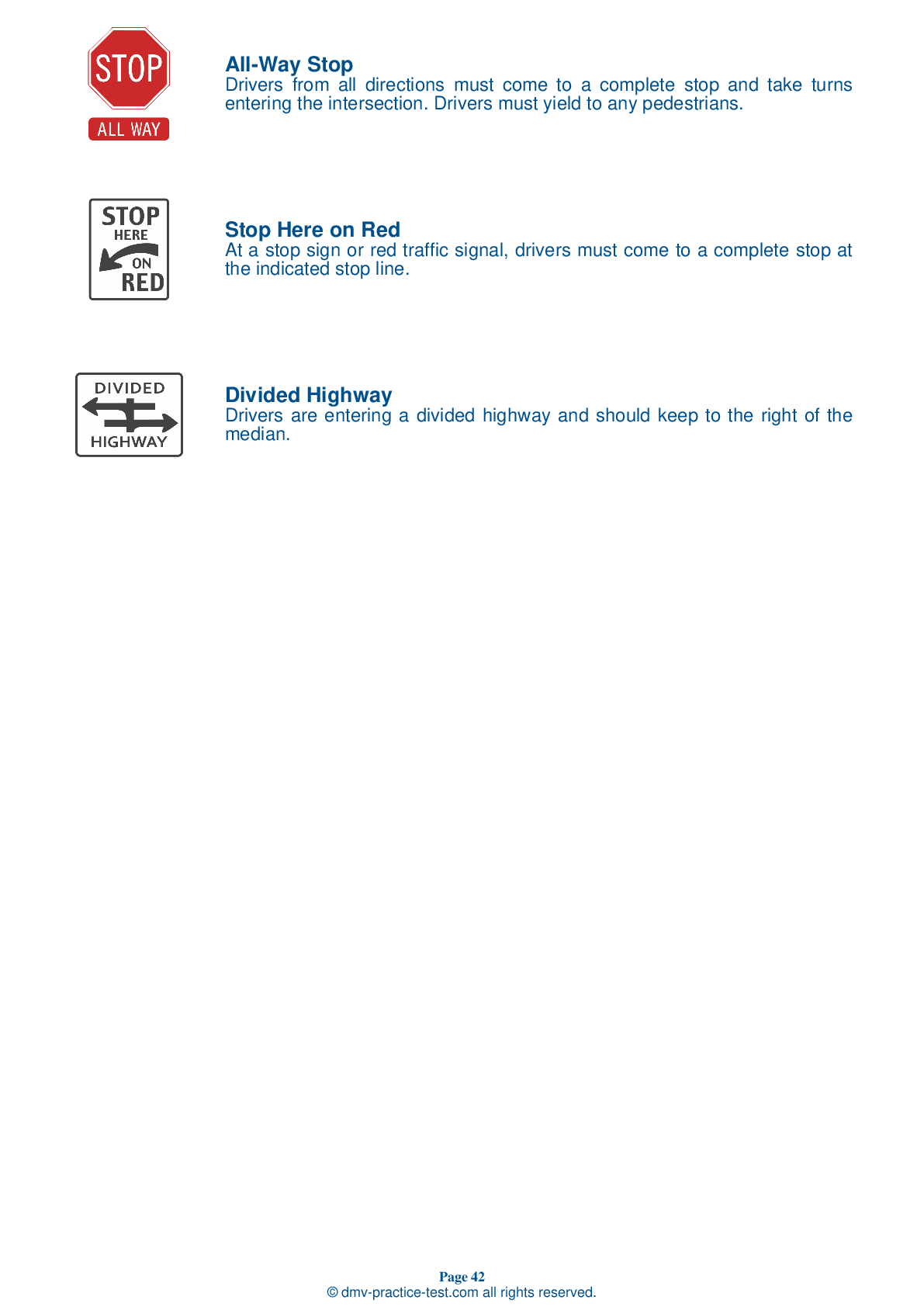FREE Indiana DMV Practice Test #16 Page 5 of 5
This set of Indiana DMV practise tests has been updated for January 2025. It includes questions based on the Indiana Driver Handbook's most significant traffic signals and laws for 2025. Use actual questions that are very similar (often identical!) to the DMV driving permit test and driver's licence exam to study for the DMV driving permit test and driver's licence exam.
On the practise exam, each question gets a tip and explanation to help you remember the concepts. The written component of the official Indiana DMV test will include questions about traffic rules, traffic signs, and driving statutes, as well as information from the Driver Handbook.
To obtain a passing grade, you must correctly answer 44 of the 50 questions. Take our DMV practise exam to help you prepare for your Indiana instruction permit or driver's licence.
The DMV exam is available in several languages.
Using any kind of testing assistance will result in an automatic fail, and the DMV may take additional action against your driver's licence, so stay away from it.
39 . This road sign means:
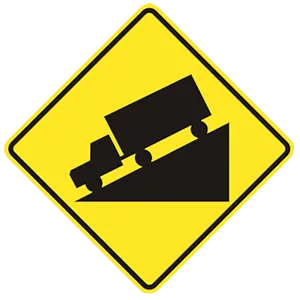
This sign indicates that a steep downhill grade is ahead.
40 . This sign means:

Warning signs prepare drivers for upcoming road conditions and hazards and are usually yellow with black markings. This sign informs drivers that they will be approaching a detour in 1,000 feet.
41 . If a green arrow turns into a solid green light, you:
If a green arrow turns into a solid green light, you may still turn in the direction that the arrow was pointing but you must first yield to pedestrians and oncoming traffic.
42 . You are approaching an intersection when the traffic light changes from green to solid yellow. You should:
When approaching an intersection with a solid yellow traffic light, slow to a stop before entering the intersection, if it is safe to do so. If you can't stop safely, drive carefully through the intersection.
43 . When you drive through an area where children are playing, you should expect them:
You should always reduce your speed and use extra caution when children are in the vicinity. They may fail to understand the danger and may run out in front of you without looking.
44 . The most important thing to remember about speed management and curves is that you must:
The most important thing to remember about driving in curves is that your vehicle’s inertia may make it difficult to turn. To maintain control, it is essential that you slow down before entering the curve.
45 . This road sign means:
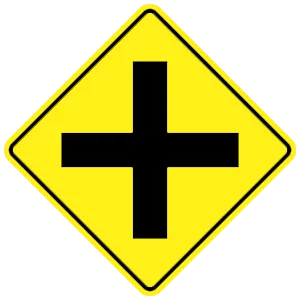
This sign means that you are approaching an upcoming intersection. Watch carefully for cross traffic.
46 . This sign is used to prevent:
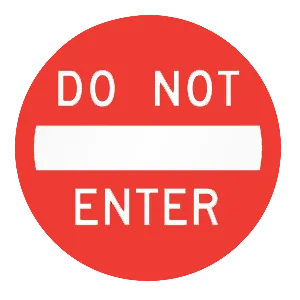
This sign warns that a road has one-way traffic and you must not enter from your current direction.
47 . When approaching railroad tracks, you should:
When approaching railroad tracks, you should look, listen, slow down, and be prepared to stop for trains or other vehicles that may be using the rails.
48 . This sign means:
